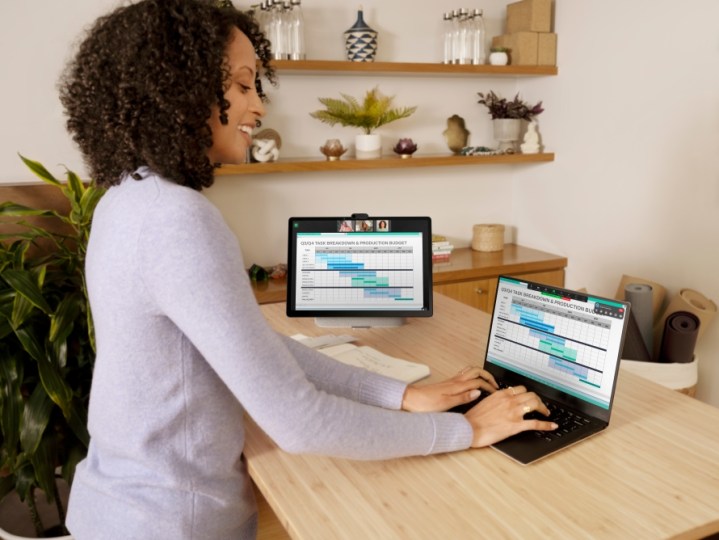Do you remember when Facebook gave us the creepy Portal displays? These were screens with built-in cameras so we could ostensibly talk to loved ones. Well, Meta (the company formerly known as Facebook) now hopes you’ll use a Portal device as a second monitor.
Meta has revealed that its Portal devices, which include the 2nd-generation Meta Portal Plus and the Meta Portal Go, can be used as a second display for productivity thanks to integration with the Duet Display app. So now even your monitor can spy on you, in case your smartphone and smart TV weren’t enough.

“We’re introducing support for the Duet Display app, which lets you turn your Meta Portal Plus (Gen 2) and Meta Portal Go into a second display for your Mac or PC when you’re not on video calls,” the company said in an August 10 blog post on the Meta website. “We’re also launching the Meta Portal Companion app on Mac for Meta Portal touch-based devices.”
It’s all thanks to support for Duet Display, an ambitious software project started by ex-Apple engineers. Duet Display turns your smartphone, tablet, or laptop into a remote computer or a second display. It follows Apple’s design ethos of making everything super simple for the user. No tinkering or dongles needed.
The Meta Portal Companion app allows users to control their portal device from a PC or Mac. Users will need to download the Duet Display app on both the primary device and the Meta Portal device, and it seems the Meta Portal Companion app is only needed on the primary device.
Meta is aggressively trying to turn itself into a hardware company and shed the baggage of Facebook. By turning Portal devices into second displays, the company is looking to become a productivity compan, as well. This ties in well with Horizon Workrooms, the Meta Oculus virtual office space showcased by Meta CEO Mark Zuckerberg late last year. Although there’s no synchronization between Oculus VR and Portal devices, we can assume the thought has crossed Zuckerberg’s mind once or twice.



